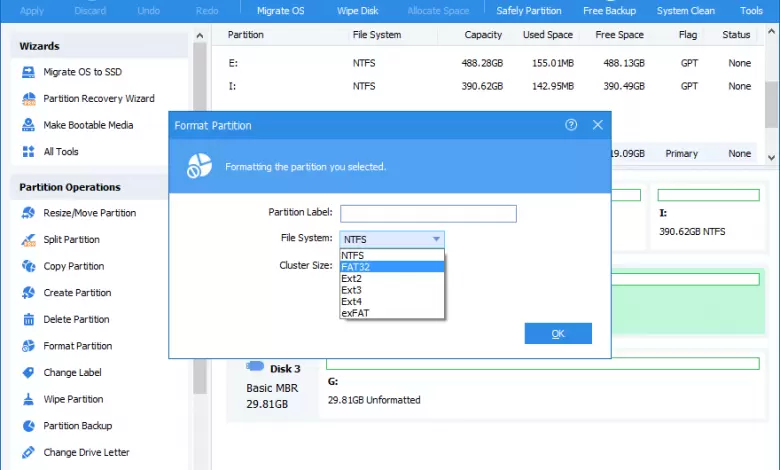Format sd card with computer in 2 ways (and fix the problem of not formatting)
Format SD card or the same memory card has different shapes, such as micro SD, SDHC, SDXC, etc. In many devices such as digital cameras, camcorders, professional single-lens digital cameras (DSLR), remote navigation equipment, Android phone Etc. It is used to increase the memory space of the device.
Sometimes there are several reasons why you might want to format your SD card on a Windows or Mac operating system. We recommend that you back up your SD card data before attempting to format it and prevent any permanent data loss.
In this article, you can format your SD card on Windows and Mac operating systems using a very practical method. You can also recover data from a corrupted or formatted SD card efficiently.
Common reasons for formatting an SD card
It is good to know that sometimes formatting the SD card is necessary, and there is nothing scary about it. Reasons to format the SD card include the following:
1- Improving the efficiency and performance of SD cards.
2- Delete all duplicate and unwanted photos, files, and items from the memory card.
3- If you can not delete the files from the SD card.
4- Change SD card file system to NTFS, FAT32, exFAT, etc.
5- If the SD card is not readable on Windows, Mac, or Android phones.
6- SD card errors such as SD card format error, inaccessible memory card, blank SD card, etc.
Prerequisites before SD card format
Whenever you decide to format an SD card or any external storage device, the most important thing before formatting an SD card is to make a backup of important files and photos.
Formatting an SD card completely erases all data. Therefore, it is recommended that you back up all important photos, raw images, videos, audio files, Microsoft Office files, documents, etc.
The question here is, can I recover my data from an unread or formatted SD card?
When your SD card cannot be read or formatted, it seems almost impossible to back up all your important files or photos. But the good news is that you can easily recover all your data from a corrupted or formatted SD card with Remo Recover software.
Using Remo SD Card Recovery software, you can recover more than 300 file formats such as photos, videos, raw images, documents, etc. This software is available for Windows and Mac operating systems, including Windows 10 and macOS Big Sur. Remo Recover software easily recovers damaged SD card data, formatted or illegible, external hard drive, SSD, drive pen, etc.
How to format SD card on Mac
Before formatting your SD card on a Mac, it is best to connect your micro / SD card to the Mac using a card reader and then back up important files, or you can use the software. Use Remo Recover Mac (download link) to recover data.
1. After installing the software, open it and go to Applications> Utilities> Disk Utility
2. From the available drives, select the SD card drive and click on Erase.
Note: If you do not see your SD card or external hard drive on your Mac, this may be due to a connection problem or the default settings.
3. Now, give your SD card a new name (optional).
4. Click on the Format option to select the type of format you want to do it.
Note: If your SD card is 64 GB and you want to make it compatible with Windows and Mac operating systems, select exFAT. Otherwise, if your memory card is 32 GB, select MS-DOS (FAT).
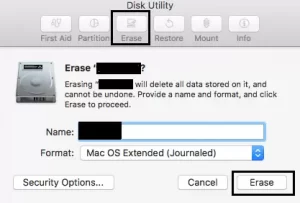
5-Click Erase and wait for the Disk utility to clear all the files on the SD card. This way, you can successfully format your memory card on your Mac.
6- Now, you can safely remove the SD card and see the improvement of your card performance. Do not worry if you have deleted SD card files on Mac without backing up, as you can easily use Remo SD Card Recovery software to recover files from SD cards on Mac.
How to format SD card in Windows
Again, before you try to format your micro / SD card, it is better to back up your important SD card information. Also, check if the SD card is locked to prevent the SD card from being formatted.
1. Connect your SD card to Windows or insert it in the SD card slot.
2. Log in to this PC.

3. Find all your available drives in the Devices and drives section.
4. Right-click on the SD card icon and select Format.
5- Change the Allocation unit size section to Default allocation size.
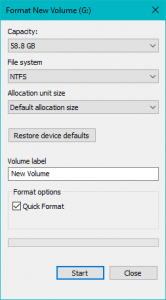
6. Click the Start button to format your SD card.
Application tips for SD card format in Windows:
- If you do not want full formatting, select Quick Format.
- You can rename your SD card with the Volume label option.
- You can also choose the file system compatible with the camera, mobile phone, professional digital camera, etc. FAT32 is preferred for SD cards with 32 GB of storage; exFAT / NTFS is preferred for drives larger than 32 GB.
Solve the problem of not formatting
Method one: Format the SD card using CMD
This method is useful if you have already randomly set your SD card in Command Prompt to readonly only. This method allows you to delete such features in Command Prompt and easily format your SD card.
1. Click the Start button (bottom left of Windows), type cmd in the search bar, right-click on it and select Run as administrator.
2. At the top of the Command Prompt Window, type Diskpart and press Enter to open the Diskpart.exe window.
3- In the next window, execute the following commands.
- list disk
- select disk #: Select your write-protected SD card.
- Attributes disk clear readonly: Remove the read-only attribute from the SD card of your choice. After this, you should be able to run the following commands in their normal format.
clean - create partition primary
- format fs = NTFS: or fs = fat32 / exFAT format according to your needs

Method 2: Format SD card with free software
If the file system is corrupted to have a write-protected problem with your SD card, you can try the AOMEI Partition Assistant Standard software (download link). It is a free and powerful disk format tool for Windows 10/8/7 and Windows XP / Vista. Using this software, you can easily format the write-protected SD card. Here’s how to format an SD card that is not formatted in Windows:
1- Download AOMEI Partition Assistant Standard software for free, and install and run it on your computer. Right-click on the SD card and select Format Partition.
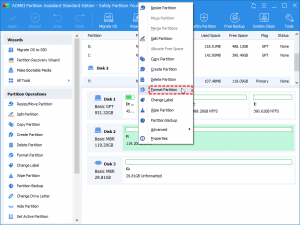
Select a suitable file system such as FAT32 in this window and then click OK.
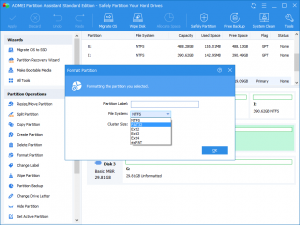
Note: AOMEI Partition Assistant Standard software allows you to format Windows hard disk with Linux Ext4 / 3/2 file system.
3. Go back to the main interface and click Apply to format the SD card completely.
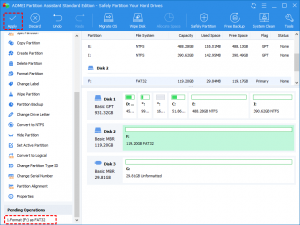
In addition, AOMEI Partition Assistant Standard software offers Check Partition, Surface Test, or Rebuild MBR functions to help repair your SD card. If you want more features like changing the operating system drive status to SSD, allocating free space from one partition to another, changing the hard disk partition status from MBR to GPT, GPT to GPT, or GPT to MBR, you can Update and get the pro version of the software.
More information: Format SD card to FAT32
In addition to the above situation where you can not easily format your SD card in Windows due to a write-protected problem, in some cases, you may not be able to format an SD card larger than 32 GB to FAT32. This is due to file system limitations.
As a result, the only available and practical way to format a 512GB, 256, 128GB, 64GB, or even 2TB SD card to FAT32 is to use a side disk partitioning software such as AOMEI Partition Assistant Standard. You can easily format an SD card with large storage space (32 GB +), flash memory, and other storage space to FAT32.










